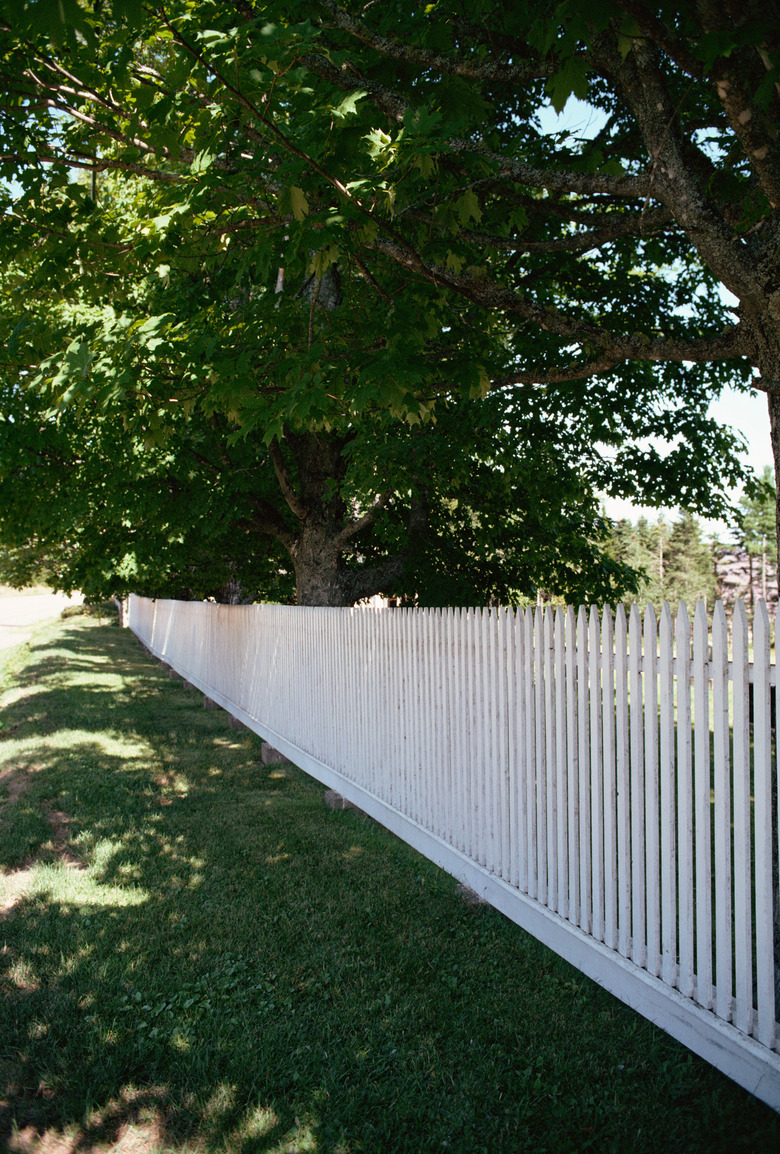Shade Ground Cover In Texas
Because all Texas lawn grasses do best in full sun, homeowners in the state often find bald spots in shady areas of their yards. Even St. Augustine grass (Stenotaphrum secundatum), hardy in U.S. Department of Agriculture plant hardiness zones 8 through 10 and the most shade tolerant, needs four hours of direct sunlight daily to thrive. As a remedy, plant something in the problem sites that requires less light. Fortunately, a number of ground covers flourish in full to partial shade, and some of them offer the bonus of seasonal flowers.
Carpet Bugle
Step 1
Probably the best ground cover for heavy shade, carpet bugle (Ajuga reptans) grows fast, spreading by underground stolons. This member of the mint family, only reaching 6 to 10 inches high, is useful planted between steppingstones. When mature, it forms such a dense mat that weeds cannot penetrate it. Grow carpet bugle in USDA zones 4 through 9. Bright-blue flowers appear on spikes in early spring. "Bronze," the best-known and fastest-growing ajuga variety, boasts reddish-bronze foliage that greens somewhat in summer. Ajuga is a fast grower and is considered invasive in some areas of the country.
- Because all Texas lawn grasses do best in full sun, homeowners in the state often find bald spots in shady areas of their yards.
- This member of the mint family, only reaching 6 to 10 inches high, is useful planted between steppingstones.
Other Full-Shade Choices
Step 1
Although known as a climbing vine, English ivy (Hedera helix) roots itself wherever it touches the ground. It fares best in USDA zones 5 to 9. Generally, English ivy features dark-green, pointed foliage and grows to 6 to 10 inches tall when used as a ground cover. The plant has drawbacks, though. Its black berries are poisonous, and it is considered an invasive plant in Texas, as well as in other states. Japanese spurge (Pachysandra terminalis) requires total shade; its foliage turns yellow when exposed to sun. This refined ground cover grows slowly to only 3 or 4 inches tall. Forming a dense carpet, it also thrives in USDA zones 5 to 9. Spring brings small, white blooms on spikes.
- Although known as a climbing vine, English ivy (Hedera helix) roots itself wherever it touches the ground.
- Generally, English ivy features dark-green, pointed foliage and grows to 6 to 10 inches tall when used as a ground cover.
For Partial Shade
Step 1
Tolerating a little more sun than some of the others, lily turf (Liriope muscari) gets taller, too, averaging 12 to 18 inches high. Dark-green, grass-like foliage grows in dense clumps. Lavender blooms last for several weeks in summer. Liriope is hardy in USDA zones 5 to 10. The improved "Big Blue" variety has longer leaves and larger flower spikes than other varieties. Similar to lily turf, mondo grass (Ophiopogon japonicus) does well in shade to almost full sun. Off-white flowers of mondo grass hide among the foliage, which stays below 12 inches. It is a good choice for areas under large shade trees and can hold soil on steep slopes. With blades thinner than those of liriope, mondo grass grows in clumps from rhizomes in USDA zones 7 to 11.
- Tolerating a little more sun than some of the others, lily turf (Liriope muscari) gets taller, too, averaging 12 to 18 inches high.
- With blades thinner than those of liriope, mondo grass grows in clumps from rhizomes in USDA zones 7 to 11.
Starting a Ground Cover
Step 1
Buying ground cover plants in gallon containers assures a greater immediate impact and allows spacing them farther apart. In addition, since they are rooted more deeply than those in small pots, the soil is more protected from erosion. Two or three weeks before planting, plot out the bed using a garden hose. Apply weed killers to eliminate existing grass and weeds in the designated spot. After the weed killers have done their work, till the soil, incorporating a 4- to 6-inch layer of organic matter. Measure the area to determine how to space the plants you bought. As you place them in the ground, set the plants at the same depths at which they were growing in the containers.
- Buying ground cover plants in gallon containers assures a greater immediate impact and allows spacing them farther apart.
- In addition, since they are rooted more deeply than those in small pots, the soil is more protected from erosion.
References
- Neil Sperry's Complete Guide to Texas Gardening; Neil Sperry
- Floridata: Ajuga Reptans
- Floridata: Hedera Helix
- Texas Invasive Plant and Pest Council: Invasives Database
- Missouri Botanical Garden: Pachysandra Terminalis
- Missouri Botanical Garden: Liriope Muscari
- Floridata: Ophiopogon Japonicus
